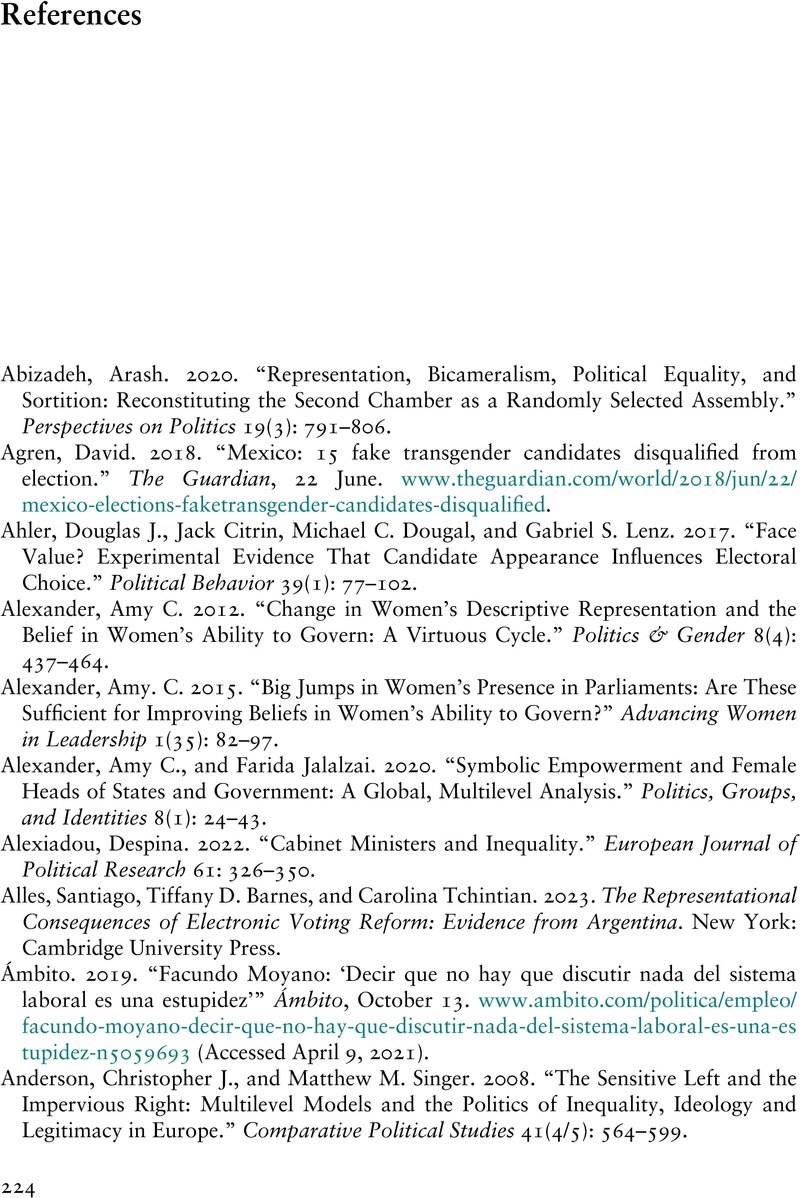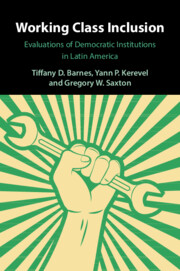Book contents
- Working Class Inclusion
- Working Class Inclusion
- Copyright page
- Contents
- Figures
- Tables
- Acknowledgments
- 1 Introduction
- 2 A Theory of Working-Class Inclusion
- 3 Do Citizens Want to Be Represented by Workers?
- 4 Will Any Worker Do? The Role of Policy in Linking Workers’ Presence to Evaluations of Representatives
- 5 Will Any Worker Do? Linking Parties to Workers in Argentina and Mexico
- 6 How Do Citizens Know Workers Are in Office?
- 7 How Do Citizens Know Workers Are in Office?
- 8 Conclusion
- References
- Index
- References
References
Published online by Cambridge University Press: 26 October 2023
- Working Class Inclusion
- Working Class Inclusion
- Copyright page
- Contents
- Figures
- Tables
- Acknowledgments
- 1 Introduction
- 2 A Theory of Working-Class Inclusion
- 3 Do Citizens Want to Be Represented by Workers?
- 4 Will Any Worker Do? The Role of Policy in Linking Workers’ Presence to Evaluations of Representatives
- 5 Will Any Worker Do? Linking Parties to Workers in Argentina and Mexico
- 6 How Do Citizens Know Workers Are in Office?
- 7 How Do Citizens Know Workers Are in Office?
- 8 Conclusion
- References
- Index
- References
Summary

- Type
- Chapter
- Information
- Working Class InclusionEvaluations of Democratic Institutions in Latin America, pp. 224 - 249Publisher: Cambridge University PressPrint publication year: 2023

